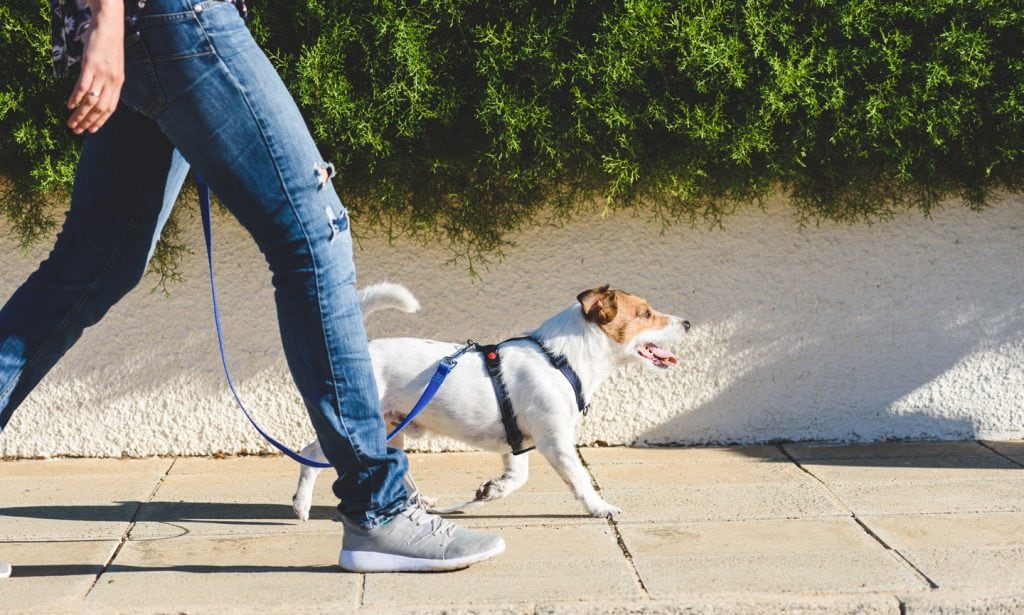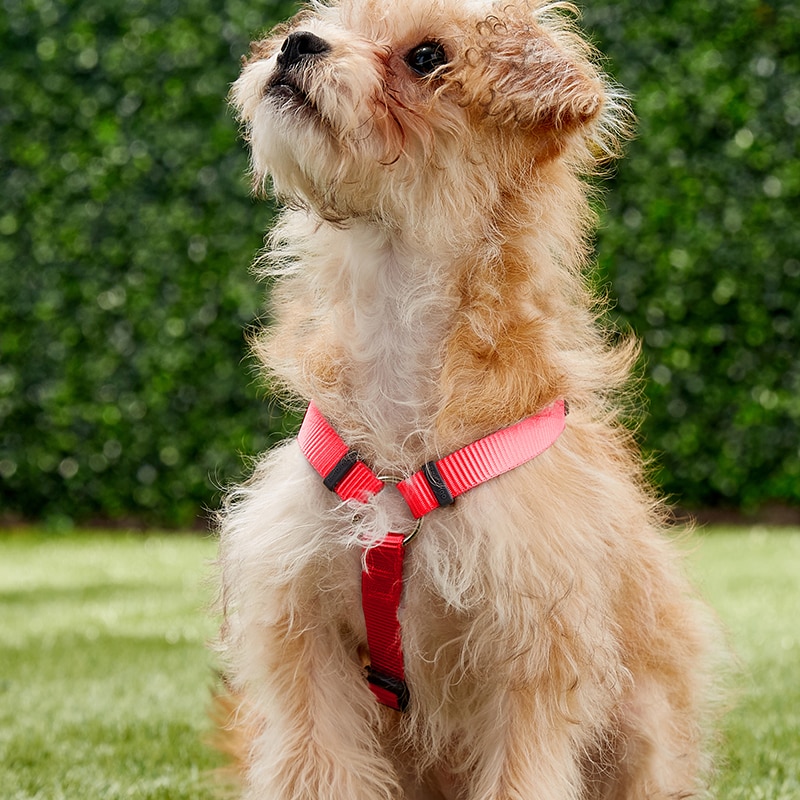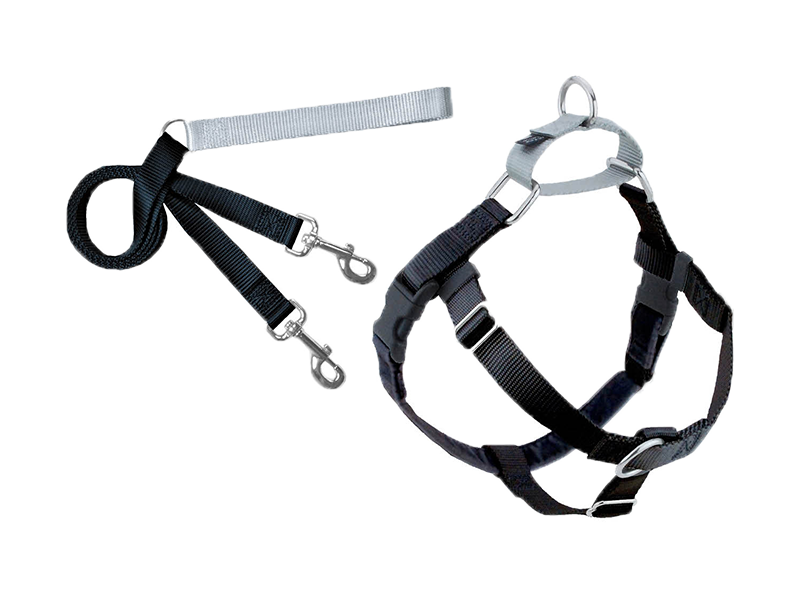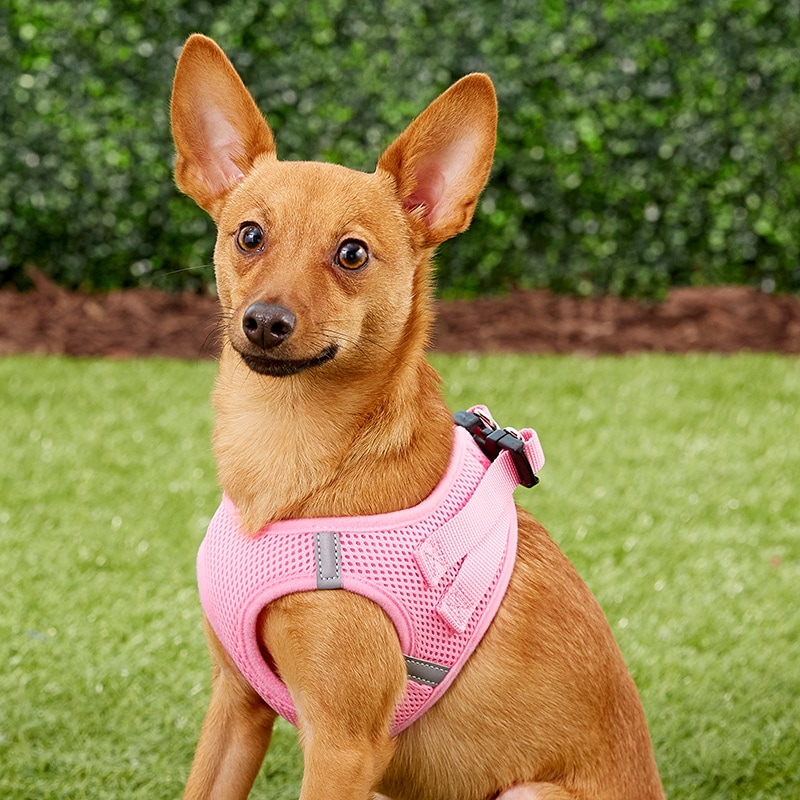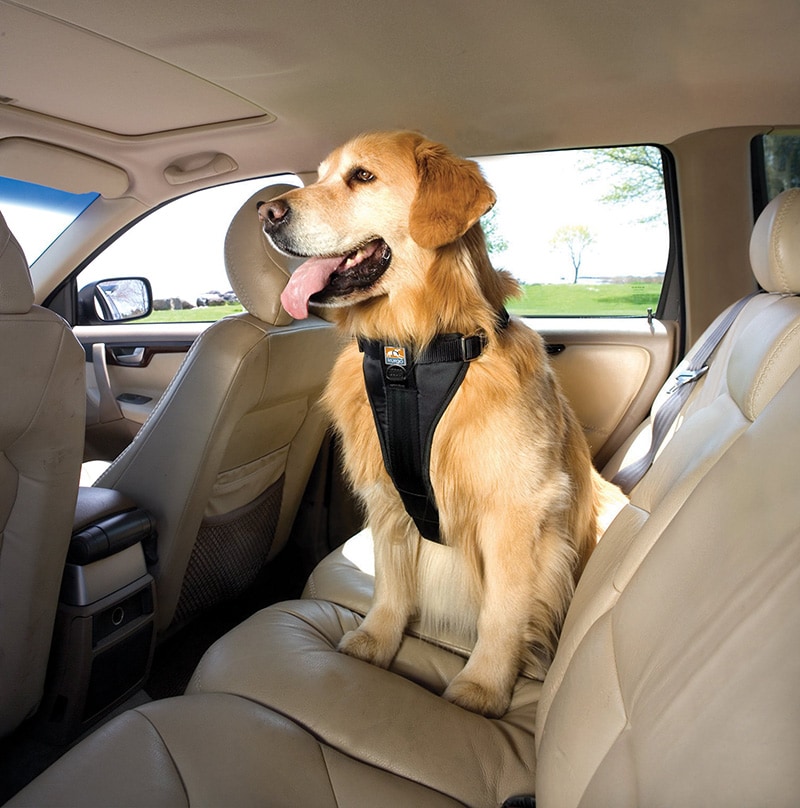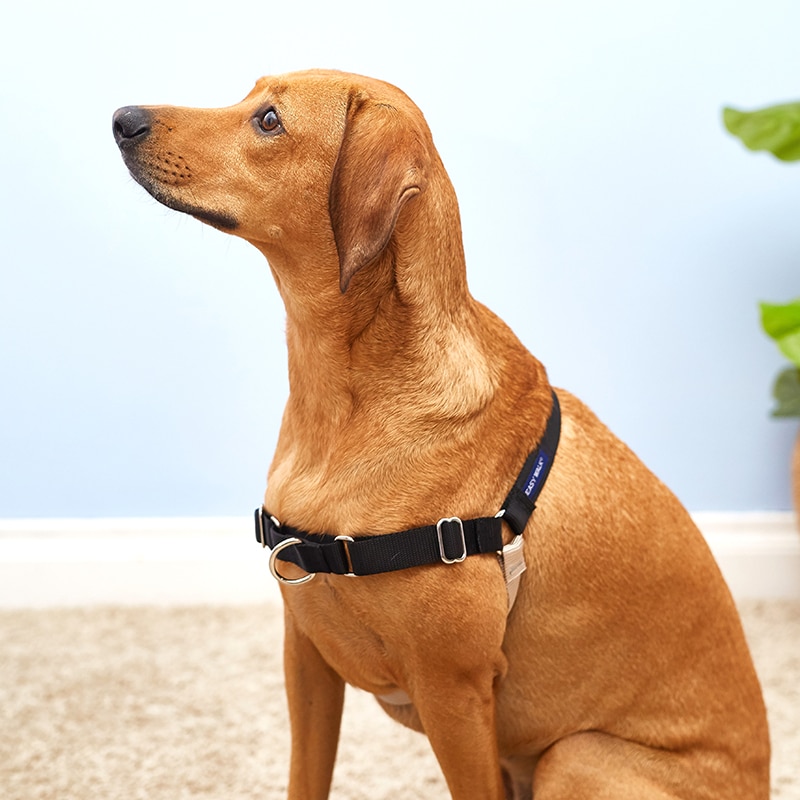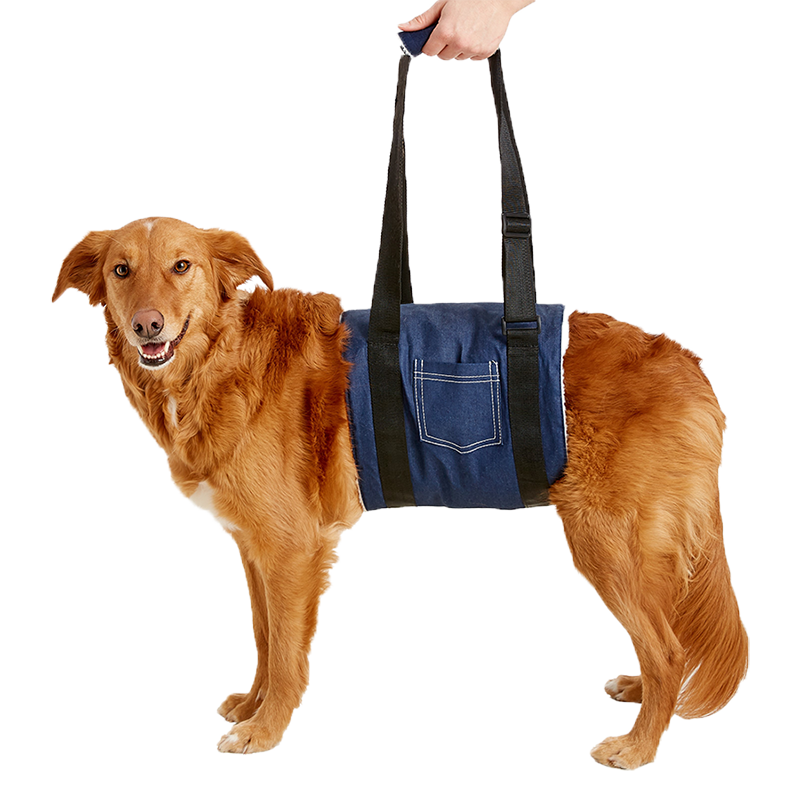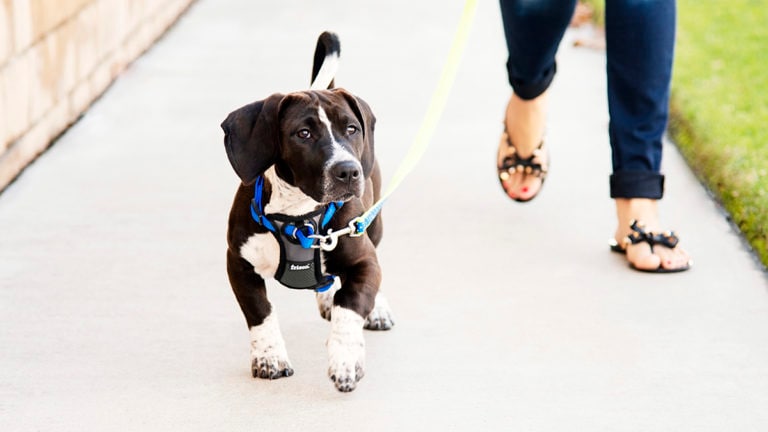A dog harness is an important tool, whether you’re training a new puppy or older rescue dog. And walking your pooch with the right type of dog harness, such as a no-pull dog harness or a dog lift harness, can make your outings run more smoothly.
A dog harness should be considered as more of a management tool, instead of actual training gear, according to Irith Bloom, a dog trainer with The Sophisticated Dog in Los Angeles, California. While some harnesses may keep your dog from pulling too hard, only solid training will teach your pup where to walk or how to match your pace, she explains.
What Is a Dog Harness?
This vest-like piece of equipment is similar to a halter or horse tack. It’s often made from weather-proof fabric, such as nylon or mesh, and is designed to fit over the back and under the chest of your dog.
“A dog harness is a good tool because it distributes pressure from the leash over a larger area of the dog’s body, and it’s designed to prevent too much stress on any one part of the dog’s body, so the dog can move comfortably and safely,” Bloom says.
Unlike a dog collar, which can put significant strain on the front of the neck, a well-designed harness can ease the pressure in this area, she adds.
Whether you need a harness for traveling or one for lifting your dog that has a disability, there are different harnesses to cater to different situations and dogs.
Different Harness Styles and Their Benefits
When selecting your pet’s harness, think about the type of walks you plan to take and the terrain you’ll cover, as well as your dog’s girth, weight, height and length.
Your pet’s breed factors in as well. Some animals have physical limitations or considerations that warrant a particular type of harness. Ask your pet’s veterinarian if you have any concerns.
Let’s take a look at the different types of harnesses that there are to choose from and find out the benefits of each.
Classic Harness
What’s a classic harness? It is a harness with strong webbing and has either stainless-steel parts or sturdy types of plastic, explains Bloom. The leash is usually attached to a clip on the back of the dog.
The Red Dingo dog harness is a classic style that checks every box: nearly a dozen colors, strong nylon webbing, secure side-release buckles and a stainless steel attachment ring.
Front Clip Harness
A front clip harness can be a good option for dogs who need more guidance on the leash.
“If you get a good front-clip, no-pull harness, your dog will be less able to pull against leash pressure,” Bloom says.
Bloom recommends the 2 Hounds Design Freedom no pull harness to her clients for its durability and quality construction.
“The Freedom Harness is also easy to adjust the fit for different dogs and has a no-pull, front-clip design, so it’s great for managing pulling,” Bloom says.
Soft Vest Dog Harness
A soft vest dog harness is exactly what it sounds like—soft, which can make it a comfortable pick for your dog.
“A harness made of softer material is likely to be both more flexible and more comfortable, but it really comes down to the individual dog,” Bloom says.
Your dog’s skin may also rub or chafe in a harder material harness, which can make a soft harness, like the Frisco small breed soft vest dog harness, a better bet.
But, if you’re looking to deter any yanking, think twice about a softer harness. Since most of these harnesses have a back clip which to attach the leash, rather than a front clip, they don’t really discourage pulling, Bloom says.
Travel Harness
Do you need a safety restraint when you travel in the car? According to Bloom, it’s a critical piece of equipment, especially one that’s been crashed-tested, like the Kurgo Tru-Fit smart harness.
“Dogs can be tossed around in a vehicle collision—and can even hit the driver— and in extreme cases, they may even be thrown out of the vehicle entirely,” Bloom warns.
It’s smart to secure your dog in the car at all times, since you never know when a collision could occur. Plus, a loose dog romping around in the back seat can create a distraction that could wind up causing an accident, Bloom says.
Two-Toned Harness
Tangles and buckle mishaps are two common complaints from pet parents when it comes to using a dog harness every day. But a two-toned harness, like the PetSafe Easy Walk dog harness, makes it easy to tell which strap goes over the shoulder and which one hugs your pet’s belly. In a word, genius.
Harness for Disabled Dogs
If your dog has mobility issues, a dog lift harness designed to assist their special needs might be a good option.
The HandicappedPets dog support sling, for example, goes around your dog’s mid-section and has a handle to allow pet parents to assist in their pet’s mobility, such as going up a set of stairs and into the car.
Other dogs might fair better with a rear lifting harness, like the HandicappedPets Rear Lift Combo Dog Harness, to provide them with a lifting boost.
Dog Harness Safety Tips
Measure carefully.
Before purchasing a dog harness, note your pup’s weight and height. A halter that’s too tight can choke or damage your dog’s throat, and one that’s too loose could allow your pup to wriggle free and get lost. “Check size charts and look at reviews from other purchasers to ensure you get the best harness for your dog’s individual body shape and size,” Bloom says.
Check the fit.
Use the two-finger method to be sure you’ve attached the harness securely. It’s generally agreed upon by experts that a fit is solid if you can place two fingers snugly between the harness and your dog.
Take it off before bed.
Don’t allow your pooch to snooze or go to bed while he’s still in the harness. “The harness could get caught on something, so your dog might become stuck and unable to move around—and may even be injured,” Bloom says. Also, since dogs can reach a harness with their mouths, some pups will chew them when unsupervised. “This can be expensive—you would need to replace the harness—and also dangerous if the dog happens to ingest any part of the harness,” Bloom adds.
Remove when wet.
A damp or wet harness not only is uncomfortable to wear, but the fabric may chafe and can cause a skin infection. Bloom shares that she rarely keeps a harness on a dog except for walks. “One reason is that even the best-fitted harness can be uncomfortable if worn for many hours in a row,” she notes.
The bottom line when it comes to dog harnesses: Know thy pet. Understand how he walks and discuss the options with your veterinarian if you have questions. Choosing the best dog harness is important, and the right one can make outings with your dog even more pleasurable.

Jennifer Kelly Geddes is a New York City writer/editor and the mom of two teenage girls. She’s also the devoted owner of a rescue pup named Django, a temperamental Shepherd mix. Geddes has worked for Food & Wine, Parenting, Seventeen and Airbnb magazines and creates content for dozens of sites, including Care, Fisher-Price, the National Sleep Foundation and Realtor.
Share:
